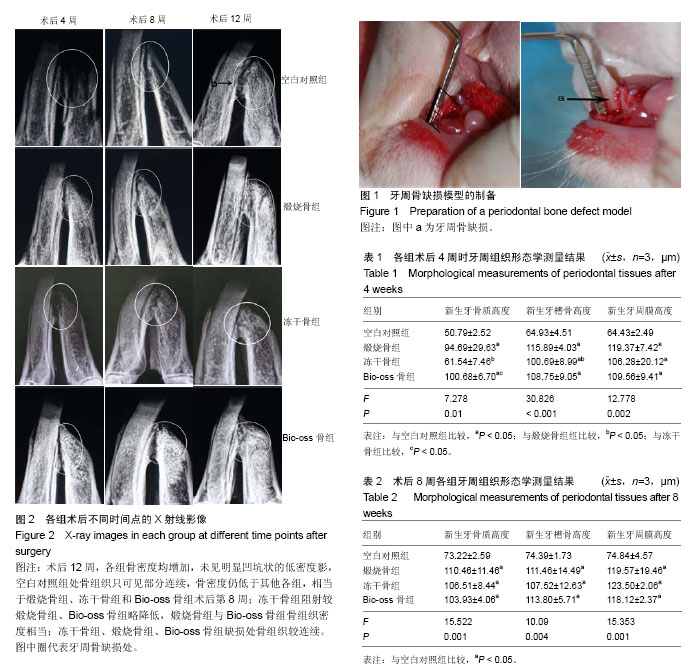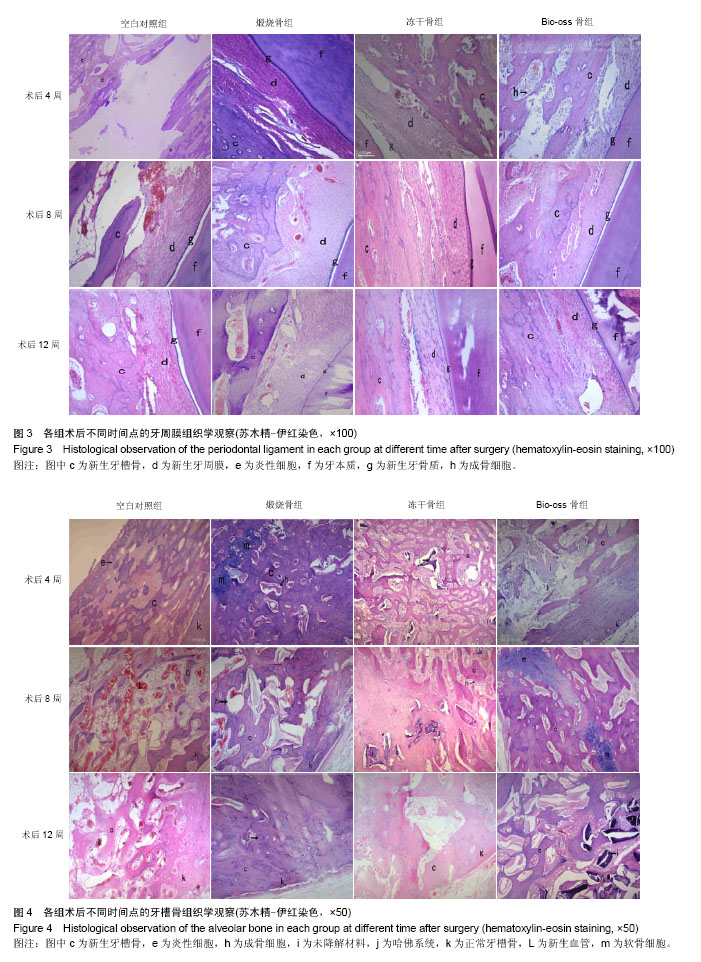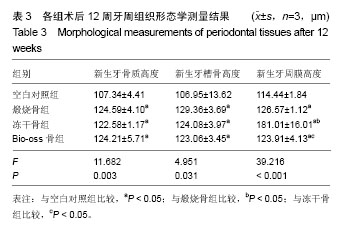| [1] Athanasiou VT,Papachristou DJ,Panagopoulos A,et al. Histological comparison of autograft,allograft-DBM, xenograft,and synthetic grafts in a trabecular bone defect:an experimental study in rabbits.Med Sci Monit.2010;16(1): 24-31.
[2] Develioglu H,Unver Saraydin S,Kartal U.The bone-healing effect of a xenograft in a rat calvarial defect model.Dent Mater J.2009;28(4):396-400.
[3] Wang HQ,Zhong WJ,Ma GW.Zhongguo Zuzhi Gongcheng Yanjiu yu Linchuang Kangfu.2008;12(27):5339-5340.
[4] Weng Y,Cao Y,Silva CA,et al. Tissue-engineered composites of bone and cartilage for mandible condylar reconstruction.J Oral Maxillofac Surg.2001;59(2):185-190.
[5] Shang Q,Wang Z,Liu W,et al.Tissue-engineered bone repair of sheep cranial defects with autologous bone marrow stromal cells.J Craniofac Surg. 2001;12(6):586-595.
[6] 向慧.BMP-9基因转染羊骨髓间充质干细胞的实验研究及其修复同种异体羊大段骨缺损的初步研究[D].重庆医科大学,2010.
[7] 周政,杨泽辉,何惠宇,等.冻干去抗原羊松质骨支架的生物相容性评价[J].中国组织工程 研究,2014,18(16):2499-2505.
[8] 杨泽辉,何惠宇,崔杰,等.煅烧与冻干制备去抗原异种骨支架材料的性能[J].中国组织工程研究,2013,17(51):8788-8794.
[9] 中华人民共和国科学技术部.关于善待实验动物的指导性意见. 2006-09-30
[10] Erdemli O,Captug O,Bilgili H,et al.In vitro and in vivo evaluation of the effects of demineralized bone matrix or calcium sulfate addition to polycaprolactone-bioglass composites.J Mater Sci Mater Med.2010;21(1):295-308.
[11] Jähn K,Braunstein V,Furlong PI,et al.A rapid method for the generation of uniform acellular bone explants: a technical note.J Orthop Surg Res.2010;5:32.
[12] 崔杰.去抗原异种松质骨支架材料的制备及性能研究[D].乌鲁木齐:新疆医科大学,2011.
[13] 许慧芬,何惠宇,唐小雪,崔杰.物理联合化学或化学方法处理去抗原异种松质骨支架与骨髓间充质干细胞的细胞相容性[J].中国组织工程研究,2012,16(5):958-962.
[14] 许春姣,翦新春,郭峰,等.黄芪多糖/壳聚糖/聚乳酸为支架的组织工程骨修复牙周组织缺损的实验研究[J].中国修复重建外科杂志, 2007,7(21):748-752.
[15] 张富强.快速成型在生物医学工程的应用[M].北京:人民军医出版社,2009:142-143.
[16] 邢辉,陈晓明,张宏泉.骨组织工程支架材料[J].生物骨科材料与临床研究,2004,1(5):35-39.
[17] Mastrogiacomo M,Muraglia A,Komlev V,et al.Tissue engineering of bone: search for a better scaffold.Orthod Craniofac Res.2005;8(4):277-284.
[18] 郑磊,王前,裴国献.骨组织工程中细胞外基质材料的选择[J].中华外科杂志,2000,38(10):745-748.
[19] Simon CG Jr,Khatri CA,Wight SA,et al.Preliminary report on the biocompatibility of a moldable, resorbable, composite bone graft consisting of calcium phosphate cement and poly(lactide-co-glycolide) microspheres. J Orthop Res. 2002; 20(3):473-482.
[20] Duda M,Pajak J.The issue of bioresorption of the Bio-Oss xenogeneic bone substitute in bone defects.Ann Univ Mariae Curie Sklodowska Med.2004;59(1):269-277.
[21] 张琴,杨川博,何惠宇,等.组织工程化骨修复羊牙槽骨缺损[J].中国组织工程研究,2013,17(34):6089-6096.
[22] Kurashina K,Kurita H,Wu Q,et al.Ectopic osteogenesis with biphasic ceramics of hydroxyapatite and tricalcium phosphate in rabbits.Biomaterials. 2002;23(2):407-412.
[23] Ramay HR,Zhang M.Biphasic calcium phosphate nanocomposite porous scaffolds for load-bearing bone tissue engineering.Biomaterials.2004;25(21):5171-5180.
[24] 马超,王臻,卢建熙,等.球形β-TCP生物陶瓷的生物学性能观察[J].科学技术与工程,2008,8(5):1126-1130.
[25] 王志强,汪琦,苏立新,等.同种异体冻干小块骨的临床应用[J].中华骨科杂志,2004,24(10):590-596.
[26] 李祖兵,侯劲松,程勇,等.聚乳酸膜复合脱钙冻干异体骨修复下颌骨缺损[J].口腔颌面外科杂志,2000,10(4):312-315.
[27] Wozney JM. The bone morphogenetic protein family and osteogenesis.J Mol Reprod and Dev.1992;32(1):160-167. |



.jpg)